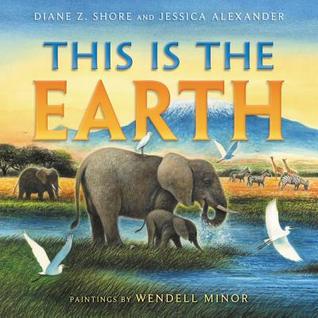Me and Marvin Gardens
by Amy Sarig King
Arthur A. Levine Books, January 2017
review copy from the public library
Obe Devlin is watching what used to be his family's farm developed into neighborhood phases, with street names that are ironic because they describe what was destroyed to create the development: Oak Trail, Pheasant's Nest, Orchard Way.
He struggles with identity (he cannot be the kind of masculine his father wants him to be), bullies, nosebleeds caused by a sucker punch from his former best friend in a turf war over what's left of the woods and the creek near his house. And he finds an amazing new breed of animal that could be the answer to all our problems, or the source of a problem as enormous as the worldwide environmental problems the human race has already caused.
But, there's a great teacher. A great science teacher. A teacher who really listens and who helps. Ms. G. goes on our list of
100 Cool Teachers in Children's Literature.
"Ms. G said I'd make a great scientist...I could be anything I wanted to be. But really, I knew I wanted to be a teacher like her. Finding Marvin Gardens had taught me so much. I wanted to pass it on...One hundred years from now, teachers would be teaching about things we would never guess. I wanted to do that. I wanted to find other kids like me and make them care about where they lived and how to make things better."
I loved this book, gave it a 4 on Goodreads for the writing. It got a 5 from my heart when I read in About the Author, "The day the bulldozers came to dig up my field was the day I started my dream of having my own farm. If you've ever seen something beautiful and magical be replaced with something more convenient, then you know why this story took me thirty years to write."
Twice this has happened to me. Most recently just this month. The first was the field and woods and creek behind the school where I taught more than 20 years ago. Where we called owls on night hikes, saw turkey buzzard eggs in a ground nest in the hollowed out tree we liked to think of as Sam Gribley's tree, caught and released garter snakes, reenacted Lewis and Clark's scientific expedition, hosted Ron Hirschi, read and wrote poetry, sang John Denver songs, identified trees, cleared paths, dreamed big dreams. The corn/soybean field is now a football field. I haven't been back to see what's become of the creek. It's entirely surrounded by subdivisions, that much I do know.
The second was a little strip of barely-tamed wild between my current school and the playground. This Land Lab was started by teachers who have since retired or moved on, and left in my trust. It was the place where we planted native grasses and flowers. Where there were wonders to taste (a few blackberries in the summer, and lemon mint leaves to chew), and touch (soft lamb's ear and waxy sedum and prickly rattlesnake master), and see (black swallowtails and monarchs, preying mantises and goldfinches, and the cup plant that captured water in its leaf-cups and had a square stem), and hear (stand in the middle of those tall native prairie grasses and listen to the wind and imagine Ohio before the Europeans got here). I was just about the only teacher with any real investment in the plot, and because of that, just about the only one who worked to keep it from going completely wild. I knew that when I retired it would go away, so when the district offered to take care of the maintenance, I let it go. I thought they would keep the trees (one so tall it shaded my second story classroom window). They did not. They leveled it. They didn't even give enough notice for those who had offered to rescue as many of the plants as they could take -- the coneflowers, yucca, iris, catnip, daffodils, hyacinths, strawberries, and lilies. I wonder what they did with the goldfinch feeder the second grade teacher left outside her classroom window when she retired?
I feel like I've failed this small strip of wild, but perhaps it will be of more use in the long run as a grassy sward. It will certainly be more convenient. And although it's gone, nothing can erase the good it did with so many classes of students and groups in Environmental Club. Maybe I could have fought harder to keep it, and that would have been one lesson to teach by example. But maybe there is much to be taught through the pain of losing of a small piece of wild, seeing as we are on the verge of (in the MIDST of) losing so much of our beloved and wild Mother Earth.
















